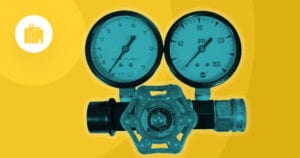
Buying a home is one of the most significant commitments that anyone can make in their life. Whether you’re looking to buy a house that will stick around for a while, or you’re searching for that perfect investment property, chances are you’re going to be worried about some of the burdens that come with property ownership. IoT can help. This article will go over three of the most exciting IoT applications in real estate and what they mean for our lives and the economy as a whole.
IoT Applications in Real Estate
So you’ve bought yourself that beautiful home you’ve been eyeing for months. You’re all moved in, and you’re finally ready to adjust to life in your new sanctuary, except you’re noticing many equipment and infrastructural issues that you were not aware of when you bought the property.
1: Predictive Maintenance
This is perhaps one of the most frustrating scenarios that could occur to any homeowner, but there’s finally a solution for it. IoT predictive analytics enables homeowners to identify and address system failures before they happen.
Applied Energy Partners’ SiteWatch platform allows homeowners to do just that. By using sensors and real-time energy monitoring, it can keep track of any irregularities that occur on your equipment and alert you when it’s time for maintenance. In addition, it can predict a maintenance schedule based on energy consumption.

2: Faster Decision Making
HouseCanary has an interesting take on predictive analytics. Their platform allows lenders and investors to get an in-depth analysis of the homes they’re interested in before they make a purchase.

With this platform and others like it, prospective buyers have everything they need to understand home valuations, ultimately leading them to make informed decisions about their property buying journey.
3: Increasing Energy Efficiency
Just as real-time energy monitoring can be used to predict maintenance patterns, it can also be used to create smarter, energy-efficient spaces based on the homeowner’s schedule. For example, think of how useful owning a Wi-Fi enabled smart water heater could be. By controlling when and for how long your water heater is running throughout the day—and allowing the device to optimize water temperatures for when you most need hot water—you can significantly reduce energy costs.
Don’t want to spend $1,500 on a new water tank? Aquanta can perform the same task for a fraction of the cost. Aquanta’s product uses sensors—one attached to the T&P valve and one connected to the cold water pipe (plus an optional moisture detection sensor)—to measure changes in temperature and monitor user patterns.
It can also be used with Nest to track when you’re away from home to reduce water heating costs and energy consumption further.
What Does This All Mean?
It’s clear that IoT applications in real estate will change the industry and also our lives in numerous ways. With all of this predictive technology, buying, owning, and selling your home is becoming more accessible than ever. Not only can IoT help homeowners become more aware of their home’s functionalities; it can also generate more market value for your home.
As previously mentioned in James Cadler’s article, smart homes garner almost $240 more in rent than those that don’t leverage IoT. So what does this mean? The homes that make use of these different types of IoT technology have a higher market value, which simultaneously adds value to homeowners, investors, and the broader economy.





 Related Podcast Episode
Related Podcast Episode




 Related Applications
Related Applications


 Latest IoT News
Latest IoT News








